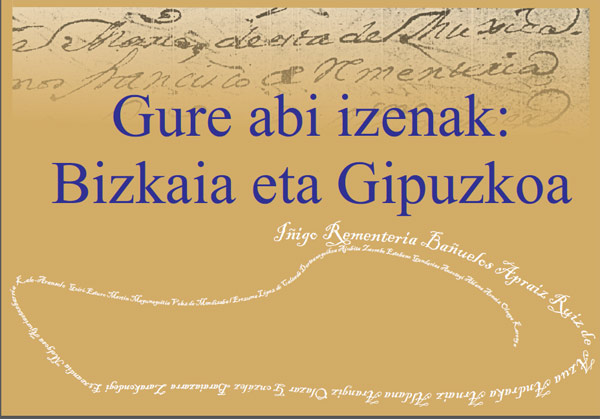basque heritage worldwide

07/01/2014

ADVERTISING
Ereño, Bizkaia. The house names are the basis of this extensive research that Iñigo Rementeria has carried out over the last few years. This is because many surnames in his home province of Bizkaia originated in the farmhouses and homes. “In the Council of Trent (1545-1563) it was decided, among other things, to create a births, weddings, and deaths registry, including the surnames of the parents. But, what were those surnames? At this time, there were no papers, identification cards, or passports,” Iñigo explains.
So what did they do? Rementeria imagines a situation in this way: “Imagine, the child is born and the father takes it to the priest.
-The priest says: name of the child, your name, mother’s name, our last name and the mother’s.
-The father says: What’s a last name?
-The priest: Where are you from?
-The father: from the Belaustegi farmhouse.
-The priest: Juan de Belaustegi.
“And that is how it was written and how they have been passed down till today in many cases,” he says.
The house creates the name
Twenty five years ago, Rementeria began to create his family tree and the search took him to the Diocese of Bizkaia archives in Derio, where he spent his mornings and vacations for the next three years. “Birth certificates in the 18th and 19th centuries are easily read, but those from the 17th and the 16th not as easily, or the surnames weren’t known. In this archive I found the book Manor Houses in Bizkaia, by Jaime de Kerexeta, a list of farmhouses.” Thanks to that he realized the relevance of the house names.
“For example, on a birth certificate from Forua the last name wasn’t clear; it could have been Tomelburu, Torrelburu, Tonelburu. I looked in Kerexeta’s book and there it was: the farmhouse Tonelburu in Foru, Bizkaia. Then I realized the connection, that the name of the farmhouse was the origin of the surname,” he remembers.
Beginning in Ereño
Rementeria was born in Gernika but lives in Ereño, a small town in Bizkaia. That is where he started his research. “It was very clear that our surname were the names of our farmhouses. Where is that seen? Well in the oldest archives in each place. This is easily done in smaller towns, like Ereño. After spending many hours in Derio and leaving a part of me there, but to do all of Bizkaia I would need 50 lives. It was impossible,” he adds.
Luckily, in 2005 the archives of the diocese of Bizkaia, Gipuzkoa and Araba were digitized and were published online (available on Dokuklik). Thanks to that breakthrough, Rementeria gathered the records of Bizkaia and then those of Gipuzkoa.
The PDF, here
Completing his research, Rementeria published a book. The work can be consulted through the Antzinako Basque Genealogical Association, and now as well on EuskalKultura.com in PDF format, in both Basque and Spanish.
To download the PDF, go here: “Gure abi izenak,” Iñigo Rementeria.
The author concluded with a petition in favor of preserving this heritage: “I have never understood why neither the Basque Government, nor the Provincial Governments haven’t done more in this area. There are more and more abandoned farmhouses and they are being lost. They are part of our culture that is one with our name, our surnames.
ADVERTISING
ADVERTISING
ADVERTISING
ADVERTISING
ADVERTISING
© 2014 - 2019 Basque Heritage Elkartea
Bera Bera 73
20009 Donostia / San Sebastián
Tel: (+34) 943 316170
Email: info@euskalkultura.eus